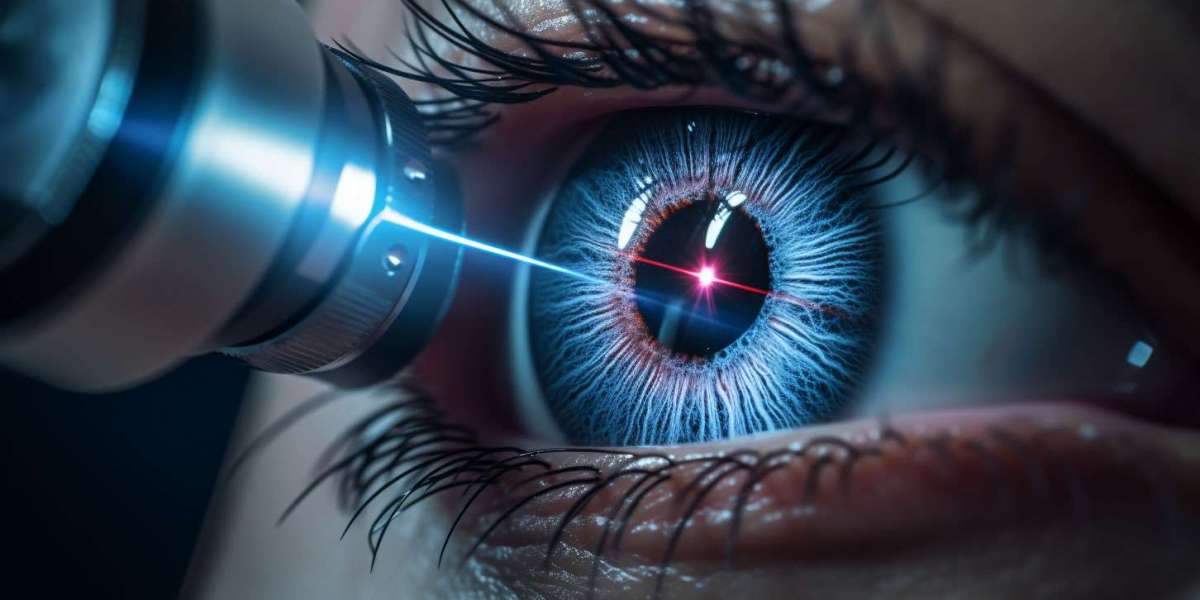In ophthalmology, advancements in technology have paved the way for transformative procedures, with laser surgery for eyes standing out as a groundbreaking option. This innovative approach, often referred to as refractive or prk laser surgery, has become a popular choice for individuals seeking to reduce or eliminate the need for glasses or contact lenses.
In this article, we will learn about laser surgery for eyes, exploring its various types, the technology involved, and the considerations individuals should keep in mind.
Types of Laser Eye Surgery
LASIK (Laser-Assisted In Situ Keratomileusis)
LASIK is perhaps the most well-known and widely performed laser eye surgery. It is designed to reshape the cornea, the transparent front part of the eye, to improve the way light is focused onto the retina. During the procedure, a microkeratome or a femtosecond laser is used to create a thin flap in the cornea. The underlying corneal tissue is then precisely reshaped using an excimer laser, allowing for vision correction.
PRK (Photorefractive Keratectomy)
PRK is an alternative laser eye surgery method that predates LASIK. In PRK, the corneal epithelium (outer layer) is removed entirely before the laser reshaping of the cornea. The epithelium regenerates naturally in the days following the procedure. While the recovery period may be longer compared to LASIK, PRK is a suitable option for individuals with thinner corneas or those at a higher risk of corneal flap complications.
SMILE (Small Incision Lenticule Extraction)
SMILE is a newer addition to the laser eye surgery repertoire. Unlike LASIK, SMILE involves creating a small incision in the cornea to extract a tiny lenticule, which is then removed through the incision. This reshapes the cornea and corrects vision. SMILE is known for its minimal disruption to corneal nerves, potentially reducing dry eye symptoms.
How Laser Eye Surgery Works?
Excimer Laser Technology
The fundamental technology behind laser eye surgery is the excimer laser. This type of laser emits a cool ultraviolet light beam, precisely removing microscopic amounts of corneal tissue without generating heat. The laser's precision allows surgeons to reshape the cornea with exceptional accuracy, correcting refractive errors such as nearsightedness, farsightedness, and astigmatism.
Customized Wavefront Technology
Customized wavefront technology enhances the precision of laser eye surgery. It creates a detailed map of the eye, identifying even subtle irregularities in the optical system. This information is then used to tailor the laser treatment to the unique characteristics of each individual's eyes, potentially improving visual outcomes and reducing the risk of side effects.
Femtosecond Laser
In procedures like LASIK and SMILE, a femtosecond laser is often employed to create precise incisions in the cornea. This laser works in extremely short bursts measured in femtoseconds, allowing for intricate and controlled cuts. The use of femtosecond lasers has contributed to the advancement of flap creation techniques, enhancing the safety and accuracy of laser eye surgery.
Considerations for Laser Eye Surgery
Candidacy Assessment
Before undergoing laser eye surgery, individuals undergo a comprehensive assessment to determine their candidacy. Factors such as age, overall eye health, refractive error, and corneal thickness are considered. A thorough examination by an experienced ophthalmologist helps ensure that the chosen procedure is suitable for the individual.
Potential Risks and Complications
While laser eye surgery has a high success rate, it's essential to be aware of potential risks and complications. These may include dry eyes, glare, halos, overcorrection or undercorrection, and, in rare cases, infection. Candid discussions with the eye surgeon about potential outcomes and realistic expectations are crucial.
Recovery and Postoperative Care
Understanding the recovery process is vital for individuals considering laser eye surgery. Depending on the procedure, recovery times may vary. Following postoperative care instructions, such as using prescribed eye drops, avoiding strenuous activities, and attending follow-up appointments, is crucial for optimal healing and visual outcomes.
Conclusion
Laser surgery for eyes has revolutionized vision correction, offering millions of individuals a chance to experience life without the dependency on glasses or contact lenses. LASIK, PRK, and SMILE are among the prominent procedures, each with its unique advantages and considerations. As technology evolves, individuals seeking eye laser surgery can look forward to even more tailored and effective solutions in the future.



